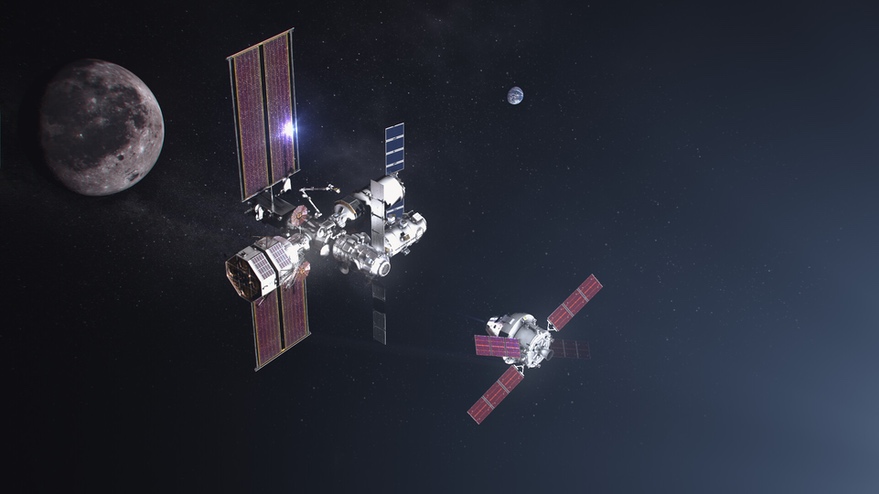WASHINGTON — The Japanese government has formally agreed to extend its participation on the International Space Station through 2030 and provide components for the lunar Gateway.
In a virtual ceremony Nov. 17, NASA and Japanese government officials signed an agreement outlining the roles that Japan will provide in the Gateway, including components for several modules and a cargo resupply mission. NASA, in turn, will fly a Japanese astronaut to the Gateway on a future Artemis mission.
In addition to the Gateway agreement, Japan’s Minister of Education, Culture, Sports, Science and Technology (MEXT) Keiko Nagaoka announced that the Japanese government had confirmed its intent to participate on the ISS through 2030, joining the United States in extending ISS operations beyond 2024.
“The United States welcomes Japan’s intention to extend its support of International Space Station (ISS) operations through 2030, following the United States’ announcement of our ISS extension one year ago,” Vice President Kamala Harris said in a statement. “In addition, our two countries are taking a step forward by reaching an agreement on collaboration on the Lunar Gateway orbiting platform, which will pave the way for the return of humanity to the Moon.”
The new Gateway agreement updates one announced in January 2021. As with the earlier agreement, the Japanese space agency JAXA will provide the life support system, thermal controls, camera and batteries for the International Habitation, or I-Hab, module, being developed in cooperation with the European Space Agency. JAXA will also provide batteries for ESA’s European System Providing Refueling Infrastructure and Telecommunication (ESPRIT) refueling module and NASA’s Habitation and Logistics Outpost (HALO) module.
Japan will develop a version of its HTV-X cargo spacecraft, called HTV-XG, to deliver supplies to the Gateway. NASA said the agreement includes a single mission to the Gateway no later than 2030.
In return, NASA said a JAXA astronaut will be included as part of the crew of a mission to the Gateway, but did not specify when that person would fly. In the January 2021 agreement, NASA only agreed to an “intent” to find flight opportunities for Japanese astronauts that would be finalized and documented in a later agreement.
“Today’s Gateway agreement represents the fulfillment commitments made by the Biden-Harris Administration and solidifies our nations’ collaboration, which will help ensure continued discoveries on Gateway, the International Space Station, and beyond,” NASA Administrator Bill Nelson said in the statement. He signed the agreement on the behalf of the agency from the Kennedy Space Center, while Nagaoka signed the agreement from Tokyo.
NASA previously coordinated agreements with Canada and ESA for their Gateway contributions. Canada, which is providing a robotic arm for the Gateway, will fly an astronaut on the first crewed Orion flight, Artemis 2, along with a later Gateway mission. ESA will have three seats on Artemis missions, likely including the Artemis 4 and 5 missions that will deliver the I-Hab and ESPRIT modules to the Gateway.
While the Gateway agreement covers only a single astronaut flight, Nagaoka said in a MEXT statement that the country will still seeking to land a Japanese astronaut on the moon as the first non-American astronaut “by the latter half of the 2020s.”
NASA said that Japan’s announcement of its extension of ISS operations makes it only the second country, after the United States, to agree to participating on the ISS beyond 2024. Both Canada and ESA have indicated their willing to do so as well. Russia, despite comments this summer that it might leave the ISS partnership after 2024, is likely to remain a part at least until the late 2020s.
